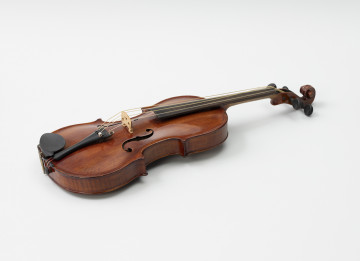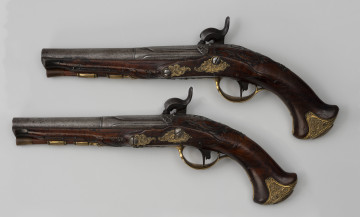
Violin bow
około 1900
National Museum in Szczecin
Part of the collections: Craft and industry products of Szczecin, Music instruments
Lutherie is a craft or rather an art of building and repairing stringed instruments by hand, using tools such as saws, files, knives, rasps, measures, planes, chisels and others. The trade demands many years of study and practice, manual skill and, above all, musical aptitude. The word luthier comes from the Italian "liutajo", which originally referred to a craftsman involved in building lutes. Some luthiers also provide services of reconstruction and restoration of stringed instruments and bow correction. From 1875 onwards, luthier August Geipel ran an instrument studio and depot in Szczecin, where, among other things, he produced violins. Luckily, one of the violins from this workshop made it through the Second World War and is now exhibited in the National Museum in Szczecin. The instrument was donated to the collection in 2000 by Gisela Hell, daughter of Otto Held, a Szczecin furniture manufacturer. He was a music lover and played as an amateur violinist in pre-war chamber music ensembles, performing, among others, at Szczecin's Roland theatre restaurant. Although the violin was made around 1900, Held bought it as a second-hand instrument from Geipel's workshop. The violin arrived at the museum with a bow, a set of strings and a green cloth which, when laid over the instrument, provided protection when the case was closed. The material also prevented the instrument from becoming out of tune by suppressing the impact of ambient temperature changes. The cloth was decorated with an embroidered trademark, being a simple lyre arranged diagonally on a ribbon of flowers, together with the maker's name. Małgorzata Peszko
Author / creator
Object type
music accessory, sheath, component
Technique
hand embroidery, cutting
Material
velvet
Origin / acquisition method
donation
Creation time / dating
Creation / finding place
Owner
Muzeum Narodowe w Szczecinie
Identification number
Location / status

około 1900
National Museum in Szczecin

około 1900
National Museum in Szczecin

circa 1773 — 1811
National Museum in Szczecin
DISCOVER this TOPIC
National Museum in Szczecin
DISCOVER this PATH
Educational path